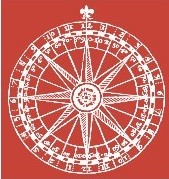Intertextual Madness in Hamlet: The Ghost's Fragmented Performativity
This essay establishes King James I's Daemonologie and Reginald Scot's Discouerie of Witchcraft as intertexts for Hamlet. It demonstrates how the diabolical linguistic register borrowed from these intertexts both heightens the verisimilitude of…
Listée dans Article | publication par groupe Iter Community
Version 1.0 - publiée le 20 Oct 2025
Sous licence Creative Commons BY-NC 4.0
Description
This essay establishes King James I’s Daemonologie and Reginald Scot’s Discouerie of Witchcraft as intertexts for Hamlet. It demonstrates how the diabolical linguistic register borrowed from these intertexts both heightens the verisimilitude of Hamlet’s madness and expands the performative potential of the Ghost. Performativity has often been discussed as a theme for this play, but usually only in relation to Hamlet himself. This essay avoids the reductionism of the “Ghost critics” and extends the performativity theme to the Ghost as well by offering him a diabolical mask to try on in addition to his many others.
Citer ce travail
Les chercheurs doivent citer ce travail comme suit :
Tags
Notes
Original publication: Kallendorf, Hilaire. "Intertextual Madness in Hamlet: The Ghost's Fragmented Performativity." Renaissance and Reformation 34 (4): 2010. 69-87. DOI: 10.33137/rr.v34i4.10802. This material has been re-published in an unmodified form on the Canadian HSS Commons with the permission of Iter Canada / Renaissance and Reformation. Copyright © the author(s). Their work is distributed by Renaissance and Reformation under a Creative Commons Attribution-NonCommercial 4.0 International License. For details, see https://creativecommons.org/licenses/.
Aperçu de la publication
Iter Community
This publication belongs to the Iter Community group.
When watching a publication, you will be notified when a new version is released.
